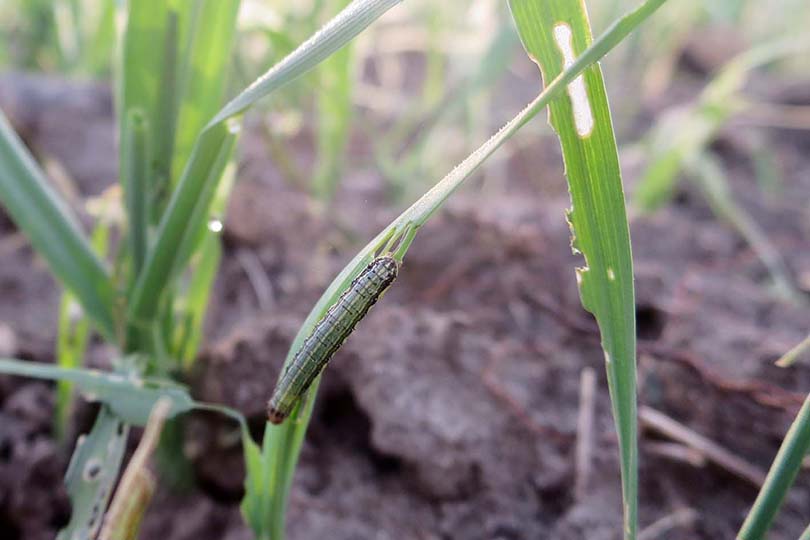By Emmy Powell
Communications Specialist
Although it’s not quite fall yet, armyworms are on the move, and experts encourage ranchers to protect their valuable forages.
Dr. Vaness Olson-Corriher, Texas A&M AgriLife Extension forage specialist, recommends scouting pastures often to prevent widespread damage.
“Producers should look for fall armyworms feeding in the crop canopy during the late evening and early morning and during cool, cloudy weather,” Olson-Corriher said. “During hot days, producers should look for armyworms low in the canopy and on the soil surface where they hide under loose soil and fallen leaves. When fields are wet with dew, armyworms can stick to rubber boots while walking through the field.”
Armyworms can cause significant damage to pastures and rangeland, if ranchers aren’t proactive in treating fields.
Winter wheat, annual ryegrass and other small grains have been found to be at higher risk of armyworm infestations.
Frequently inspecting fields for infestations is vital. Once armyworms are three-quarters of an inch long, their forage consumption increases dramatically. According to Olson-Corriher, armyworms can move into an adjacent field and continue to feed.
Ranchers are encouraged to look for armyworms that are green with brown or black patterns and are identified by the white inverted Y on their heads.
“If practical, producers should apply insecticides early in the morning or late in the evening when armyworm larva are most active, and therefore, most likely to encounter the insecticide spray,” Olson-Corriher told the Texas Farm Bureau Radio Network. “If the field is near harvest, an early harvest rather than an insecticide treatment is an option. Once producers have cut the field, most of the armyworms will die due to lack of food and exposure to high temperatures.”
It’s important to read and follow label instructions when using insecticides.
View AgriLife’s Fall Armyworm Control in Pastures booklet for more information on armyworm management.


Leave A Comment